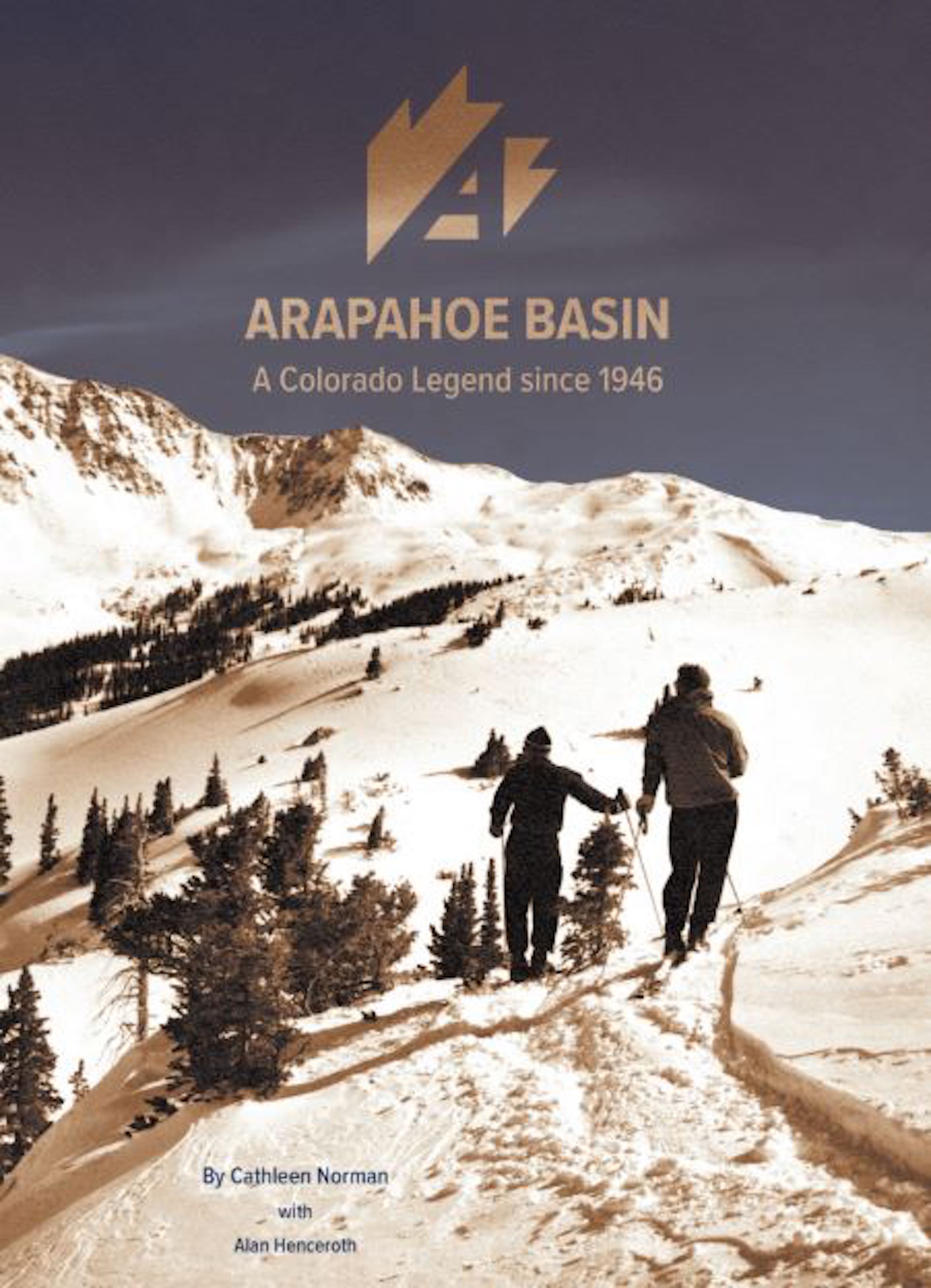Story
Arapahoe Basin: A Colorado Legend Since 1946
A review of Cathleen Norman and Alan J. Henceroth's 2020 book, Arapahoe Basin: A Colorado Legend Since 1946.
Editor's note: This review comes to you from the Colorado Book Review. More reviews can be found at the Denver Public Library.
Cathleen Norman’s Arapahoe Basin: A Colorado Legend Since 1946 begins with the mining camps. Residents, from miners to ministers, would use skis to get from one place to another in the winter Rocky Mountains during the 1800s. Skis, or “Norwegian snow shoes” were a basic mode of transportation in those early days and allowed for life to keep going during the winters.
Jumping forward to the Tenth Mountain Division, the history picks up the tale of this storied Army ski troop training camp. Many of its soldiers hailed from other states but were brought together to train at Camp Hale. Norman does a good job of delving into their ski resumés, with many skiing for state forest services that were being founded in states like Vermont before heeding the call to serve their nation on skis. The US Army modeled this division on Finnish ski troops who stood strong against the Russian invasion during the Winter War of the late 1930s.
Norman then details the early struggles to found the Tenth Mountain Division camp at Pando near Leadville. This meant scrounging equipment and gaining approval from the federal government and the military. She enlivens the tale with many sidebars detailing colorful characters from Arapahoe Basin, one of the first ski areas founded by Tenth Mountain Division veterans. She connects A-Basin’s history to local towns such as Dillon and Georgetown, as well as giving the reader a glimpse into how early recreational skiers acquired surplus military gear to stay warm on the slopes. This insight into primitive ski equipment allows experienced skiers to appreciate their modern high-tech waterproof fibers and ski bindings designed to prevent serious injury.
Norman and contributor Alan J. Henceroth bring insights into the early days and personalities that shaped A-Basin into the niche resort that it is today. The book itself contains many photos in black and white as well as color. Also included are logos, patches, ski maps (an art form in their own right), as well as posters and ads from the resort’s history. These images dominate the last half of the book with a pictorial history of A-Basin. The images span over a century and half, dating from the 1870s to just before the book’s publication.
Images tell the story of skiing in ways that text itself cannot. We see in this book’s comprehensive image database the historical evolution of skiing from a staid sport with tow ropes bringing skiers up the hill to high-speed chairlifts as well as extreme sports that dominate the industry today. The photographic section includes some fantastic images of skiers in bikinis and other nontraditional gear enjoying late-season skiing.
Arapahoe Basin prides itself on being one of the first ski areas to open each season and the last to close, sometimes as late as the Fourth of July depending on weather. This is a small niche resort that is not for the faint of heart. It has managed to maintain its independent spirit, and this book does a great job of detailing how A-Basin developed that spirit.

